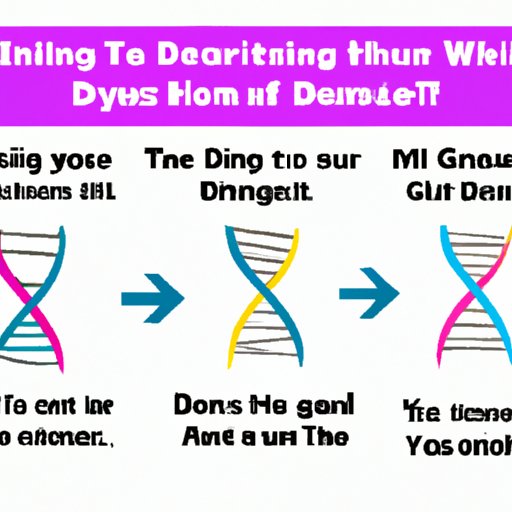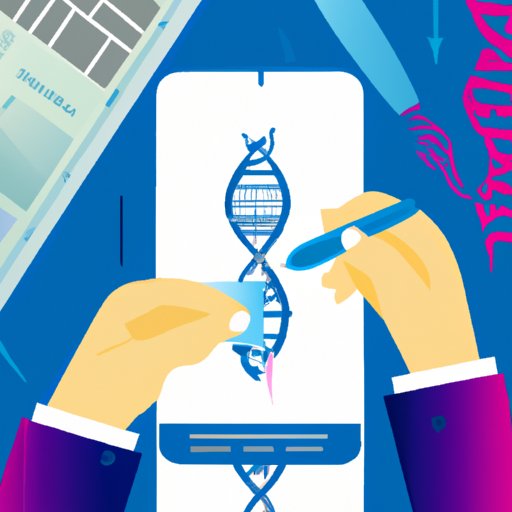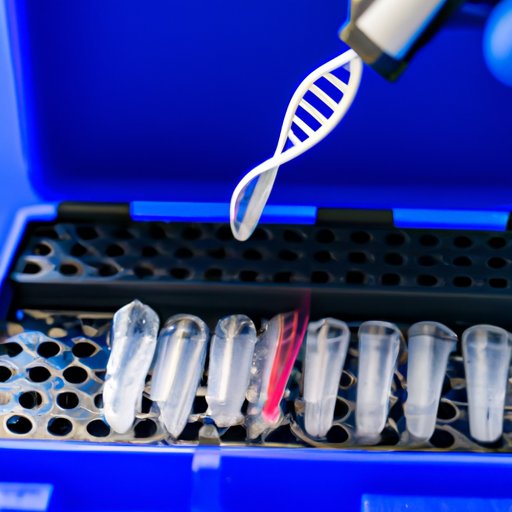Introduction
DNA testing is a scientific process used to analyze and compare genetic material from individuals for the purpose of identification or determining relationships. DNA testing is a powerful tool that can be used in many different applications, including criminal investigations, paternity testing, and medical research. The accuracy and reliability of DNA testing make it an invaluable resource for a variety of purposes.
Exploring the Science Behind DNA Testing
At the core of DNA testing is the understanding of genetics and DNA structure. DNA stands for deoxyribonucleic acid and is a molecule found in all living cells that contain the genetic code of an individual organism. This genetic code is made up of four chemical bases—adenine (A), thymine (T), guanine (G), and cytosine (C)—which are arranged in a specific sequence. Each person’s DNA is unique, with the exception of identical twins who share the same genetic code.
In DNA testing, genetic material is extracted from samples taken from individuals, such as blood, saliva, or hair. This genetic material is then compared to determine if there is a match between two or more individuals. By comparing genetic material, scientists can determine whether two individuals are related or not.

A Guide to Understanding How DNA Testing Works
The process of DNA testing involves several steps, starting with sample collection and ending with interpretation of the results. First, a sample must be collected from the individuals being tested. This sample is then sent to a specialized laboratory where it is processed and analyzed using specialized laboratory equipment and techniques. Once the samples have been processed, the results are interpreted by trained professionals.
Unpacking the Process: What Happens During DNA Testing?
The first step in DNA testing is collecting a sample from the individual being tested. This is usually done through a simple cheek swab or blood draw. Once the sample has been collected, it is then sent to a specialized laboratory for processing and analysis. In the laboratory, the sample is prepared and examined under a microscope to extract the DNA. The DNA is then amplified, or replicated, so that it can be studied further.
Once the DNA has been extracted and amplified, it is then subjected to a variety of tests and analyses. These tests include Polymerase Chain Reaction (PCR) and Restriction Fragment Length Polymorphism (RFLP). PCR is a technique used to copy and amplify small segments of DNA, while RFLP is a method used to identify variations in the genetic material. Through these tests, scientists can determine if two individuals are related or not.
The Benefits of DNA Testing: An Overview
DNA testing has become an invaluable tool for a variety of applications. It can be used for criminal investigations, paternity testing, and medical research. DNA testing can also be used to identify individuals in mass disasters and to locate missing persons. The accuracy and reliability of DNA testing make it a powerful tool for many different purposes.
There are several types of DNA tests available, each designed to meet specific needs. For example, forensic DNA testing is used to identify suspects in criminal cases, while paternity testing is used to determine the biological father of a child. Medical DNA testing is used to diagnose and treat genetic diseases, while ancestry testing is used to trace a person’s family history.

Breaking Down the Steps Involved in DNA Testing
DNA testing begins with the collection of a sample from the individual being tested. The sample is then sent to a specialized laboratory where it is processed and analyzed. At the laboratory, the sample is prepared and examined under a microscope to extract the DNA. The DNA is then amplified and subjected to a variety of tests and analyses.
Once the tests have been completed, the results are then interpreted by trained professionals. The interpretation of the results is based on the type of test being performed and the information that is being sought. Depending on the type of test, the results may indicate a relationship between two individuals or provide information about a person’s genetic makeup.

How Modern Technology Has Revolutionized DNA Testing
Advances in technology have greatly improved the accuracy and speed of DNA testing. New techniques such as Next Generation Sequencing (NGS) allow scientists to rapidly sequence large amounts of DNA in just a few hours. This has enabled more accurate and faster testing, which has had a significant impact on the field of genetic testing.
In addition, new technologies such as bioinformatics and machine learning have allowed scientists to develop more sophisticated methods of analyzing DNA data. These advances have enabled scientists to uncover more information about the human genome than ever before, leading to greater insights into genetic disease and the development of more effective treatments.
Conclusion
DNA testing is a powerful tool that can be used in many different applications, including criminal investigations, paternity testing, and medical research. While the process of DNA testing may seem complex, understanding the science behind it is essential in order to reap its full benefits. Advances in technology have revolutionized the field of genetic testing, enabling more accurate and faster testing.
Overall, DNA testing is an invaluable resource that can provide valuable insight into a variety of areas. From determining relationships between individuals to uncovering information about genetic disease, DNA testing is an essential tool for understanding our world.
(Note: Is this article not meeting your expectations? Do you have knowledge or insights to share? Unlock new opportunities and expand your reach by joining our authors team. Click Registration to join us and share your expertise with our readers.)
